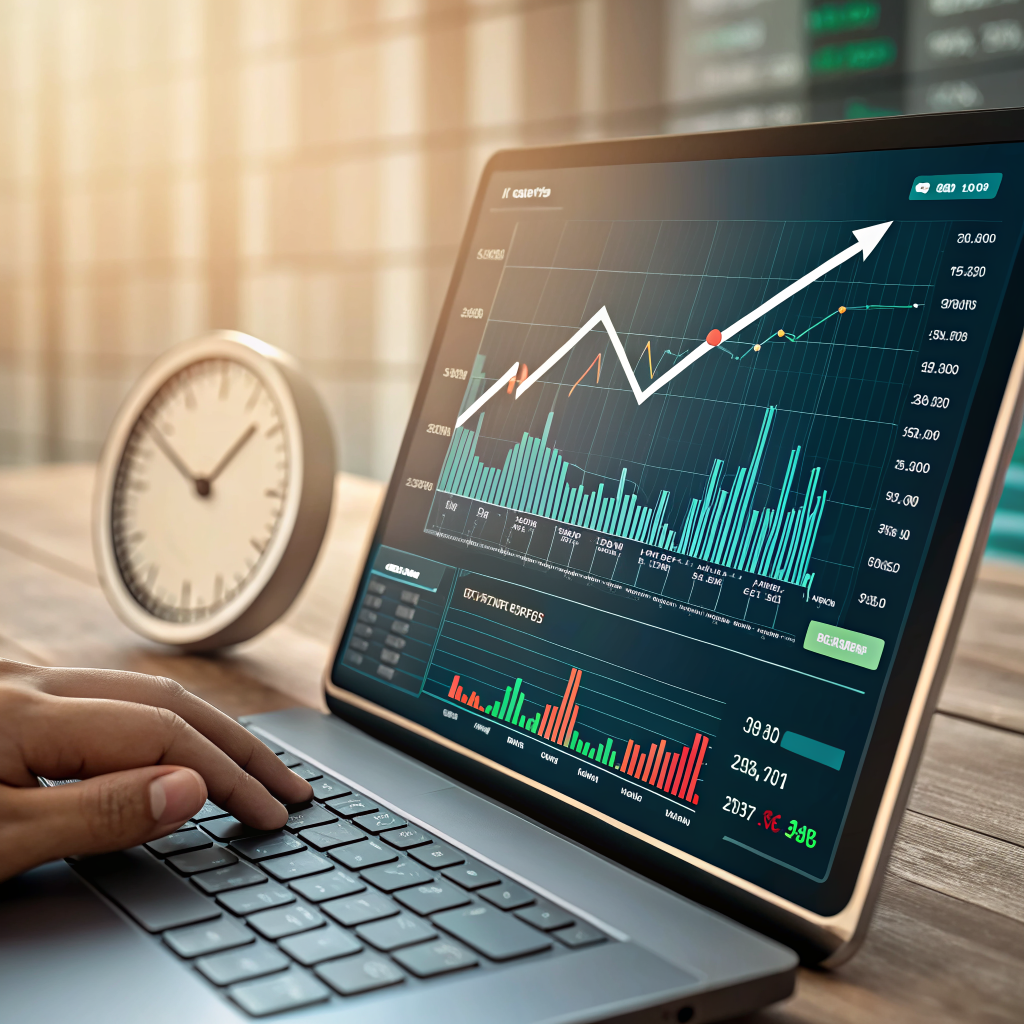
What Is Day Trading ETFs?
This means you are day trading ETFs when you buy or sell exchange-traded funds all within the same trading day as an attempt to further capitalize on the virtual price movements within predetermined ranges. Unlike traditional ETF investing whereby you keep your stocks at a fixed number of years, this one involves lively, playful active participation and strategy. Thus, day traders would be tempted by the liquidity of these funds, their exposure to specific sectors, and intraday volatility—great ingredients for timing quite a few quick profits, assuming you are a sharp analyst and nimble in attribution.
How ETFs Work in a Day Trading Context
What Makes an ETF Suitable for Day Trading?
The ideal ETF for intraday trading combines:
- High Liquidity: Ensures seamless entries and exits without slippage.
- Tight Bid-Ask Spreads: Minimizes trading costs.
- Intraday Volatility: Offers enough price movement to capture profits.
These characteristics are essential for scalping or rapid trade execution and are often found in ETFs tracking major indices or sectors.
Types of ETFs for Intraday Trading
Here are four commonly traded ETF categories that suit various trading styles:
- Leveraged ETFs – Amplify daily returns by 2x or 3x the benchmark index.
- Inverse ETFs – Move opposite to the underlying index, ideal in bearish markets.
- Sector-Specific ETFs – Focused exposure to sectors like tech, biotech, or energy.
- High-Volume ETFs – SPY (S&P 500), QQQ (Nasdaq 100), IWM (Russell 2000).
Key Factors That Move ETF Prices
Liquidity and Volume
High liquidity and volume ensure minimal slippage and allow traders to execute orders quickly. These factors also contribute to narrow bid-ask spreads and accurate price discovery.
Underlying Asset Volatility
Since ETFs derive their value from a basket of underlying securities, volatility in those assets directly impacts ETF pricing. For instance, commodity ETFs respond rapidly to changes in the price of oil or gold.
Market Sentiment and Economic Data
Economic indicators like employment figures, inflation rates, and central bank decisions can significantly move markets and, by extension, ETFs. Traders must stay informed and ready to react quickly.
Strategies for Day Trading ETFs
Scalping Techniques
Scalping involves executing dozens of trades per day, aiming for small profits on each. Fast execution and reliable risk control are vital.
Momentum Trading
Momentum traders follow the trend, jumping into ETFs that are gaining strength with increased volume. This strategy banks on continuation rather than reversal.
Range Trading
When ETFs are moving sideways, traders identify key support and resistance levels to buy low and sell high. RSI and Bollinger Bands are key tools here.
News-Based Trades
Traders exploit price reactions to major news events, such as earnings releases or macroeconomic reports. Speed and timing are critical for success.
Technical Analysis and Indicators
Useful tools for ETF day traders include:
- Moving Averages (MA)
- MACD (Moving Average Convergence Divergence)
- RSI (Relative Strength Index)
- VWAP (Volume-Weighted Average Price)
These help identify trends, reversals, and entry/exit points.
Risks and Challenges of Day Trading ETFs
Volatility Risks in Leveraged ETFs
These ETFs can double or triple returns—but also losses. Overnight holding may cause tracking errors due to daily rebalancing, compounding risks.
Overtrading and Emotional Bias
Frequent trades can lead to burnout and impulsive decisions. Maintaining emotional discipline is essential to avoid revenge trading and poor entries.
Costs and Tax Implications
Active trading generates commission fees (if applicable), wider spreads in volatile markets, and taxable short-term gains. These need to be included in ROI calculations.
Tips for Successful ETF Day Trading
Set Realistic Goals and Risk Limits
Stick to a trading plan with defined profit/loss targets. Typically, risking more than 1–2% of your capital per trade is discouraged.
Use Stop-Loss and Take-Profit Orders
Automation helps eliminate emotion and protects against sharp reversals or missed exit opportunities.
Maintain a Consistent Trading Journal
Logging every trade helps identify what works and what doesn’t. Review your journal weekly to spot patterns and improve your strategy.
Pros and Cons of Day Trading ETFs
| Pros | Cons |
| High liquidity and access to diversified exposure | High volatility, especially in leveraged ETFs |
| No pattern day trading restrictions for cash accounts | Requires fast decision-making and rigorous discipline |
| Flexibility to profit in both rising and falling markets | Taxable gains and possible high trading costs |
Frequently Asked Questions
Can you day trade ETFs with a small account?
Yes. Many brokers now offer commission-free ETF trading and fractional shares, allowing traders with limited capital to actively participate.
What are the best ETFs for day trading?
Top choices include SPY, QQQ, IWM, TQQQ, and SQQQ due to their high trading volume and responsive price action.
Are leveraged ETFs good for day trading?
They can be—if used wisely. Their amplified moves are attractive to experienced traders, but they demand tight risk controls and active monitoring.
Do ETFs have trading hours like stocks?
Yes. ETFs follow standard U.S. market hours (9:30 AM to 4 PM ET). Some also trade during pre-market and after-hours, but with reduced liquidity.